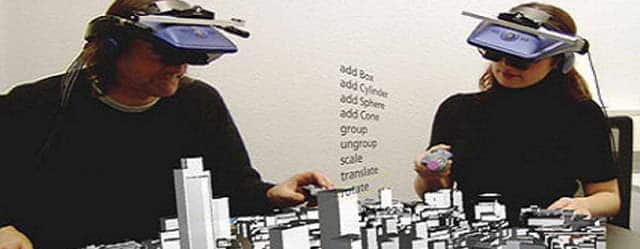Augmented Reality (AR) is a field of computer research, which deals with the combination of real world and computer-generated data (virtual reality), where computer graphics objects is blended into real footage in real time. At present, most AR research is concerned with the use of live video imagery, which is digitally processed and “augmented” by the addition of computer-generated graphics. Advanced research includes the use of motion-tracking data, fiducial markers recognition using machine vision, and the construction of controlled environments containing any number of sensors and actuators.

Augmented reality changed the way the users see the world. Augmented Reality enhances a user’s perception of and interaction with the real world. The virtual objects display information that the user cannot directly detect with their own senses. The information conveyed by the virtual objects helps a user perform real-world tasks. The base of the augmented reality is on computer graphics. Next-generation augmented-reality systems will display graphics for each viewer’s perspective. Augmented reality (AR) works on the same principles as virtual reality. Augmented reality overlays virtual objects and information over the real world, unlike VR (Virtual Reality) where the user is immersed in a completely virtual environment. This is usually achieved by the use of see-through head mounted displays and tracking devices.
Applications
iPhone
There are augmented reality iPhone and Smart Phone applications released in to the market. iPhone’s Layar application is a nice example for augmented reality. The Layar augmented reality browser looks at an environment through the phone’s camera and overlays data on top of points of interest such as restaurants, shops and tourist attractions. The app retrieves information from third-party developers who contribute their “layers” to the Layar platform. For example, there is a layer called iMetro, and when that’s selected and you’re standing outside, Layar will display digital overlays of nearby bus stops and the time the next bus is arriving.
There is an augmented reality feature which can be accessible through Easter egg in iPhone 3GS, which is activated by shaking the handset three times. A message will appear reading, “The Monocle has been activated,” and then a Monocle button will appear in the upper-right corner. Tapping that button will launch your iPhone camera, and digital overlays of business listings, accompanied by star ratings, appear on screen. The app presumably draws its geo-aware powers from the iPhone 3GS’ digital compass and GPS.
SmartPhone
There’s a smartphone app named Recognizr uses recognition software to create a 3-D model of a person’s mug. Then it transmits the model to a server, which matches it with an image stored in the database. An online server performs facial recognition, shoots back a name of the subject, and links to his social networking profiles.
Medical
In Medical, Augmented Reality technology could provide an internal view of the human body to 3-D digital dataset in real time. This can be reduced the need for larger incisions.
Military
In military, aircraft and helicopters have used Head-Up Displays (HUDs) and Helmet-Mounted Sights (HMS) to superimpose vector graphics upon the pilot’s view of the real world. Besides providing basic navigation and flight information, these graphics are sometimes registered with targets in the environment, providing a way to aim the aircraft’s weapons.
Transportation
Transportation navigation is one of the main achievements of Augmented Reality. Modern GPS navigation systems using street views which contain augmented reality technologies.
Business and Marketing
In the business world, Augmented Reality could be a really good marketing tool among businesses. Best Buy is a good example for AR advertisement.
In Future It Can Be Used To
- Entertainments, where real world people can be interact with virtual objects. This can be used in gaming environments perfectly.
- Transportation signs and signals, where the roadside signs can be created virtually and placed
- Road vehicles’ navigation system can be replaced with AR technology. Where the driver can interact with the real world virtually.
- Without leave the house, people can do the shopping. Find, match, and change products with a single touch.
- Documents can be created in real world by virtual objects such as virtual AR word processing software.
Disadvantages
Even though Augmented Reality has a lot of advantages, it has some disadvantages as well. Currently, the cost for the technology is high. Therefore, not every people might able to take the advantage of the technology. The GPS on a mobile phone normally only gives a position within around 20 meters, while the iPhone’s compass orientation is only accurate to around 20 degrees. This can lead to problems in determining exactly what’s within the camera’s view.
References
Tags: #Multimedia
